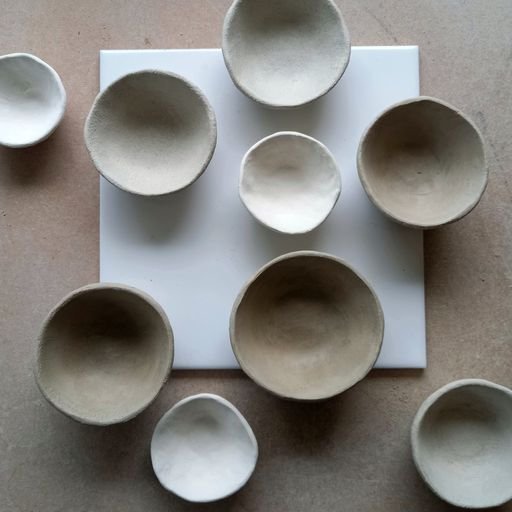Simple Ceramics
Making pinch pots
I posted on Instagram the other day for the first time in a few weeks. I hadn’t felt the urge to put a photo and caption on there recently. Maybe it was down to the “lockdown wall” which I – and many other people – seemed to hit toward the middle of this month. It wasn’t because I had nothing to post, I’d been making ceramics and going out for the usual walks. It just seemed far too complicated to edit the picture and write the post and then, inevitably, get sucked into the scrolling…all far too tiring. Everything seems far too tiring.
Sometimes the best thing is to go back to ease and simplicity. A few weeks away from social media (most of the time) and a number of pinch pots later I felt much better than I did. I reminded myself that everything doesn’t have to be hard, or a challenge. Making things challenging and hard is practically hardwired into my brain, it’s taken me quite a time to stop berating myself for occasionally taking the smoother path.
But back to the pinch pots
Pinch pots, or thumb pots as they’re sometimes called, have been found from waaaay back…from the very beginning of people manipulating clay into useful forms. You’ll remember making them as a small-, from play-doh, salt dough or plasticine. Or that weird air-drying clay with the fibres in it, which I’ve always found strange to work with. With salt dough or air-drying clay they’d be baked/dried out and then painted with bright poster paints to become a Mother’s Day gift – a small bowl complete with a few sweets, or a Christmas tea-light holder. We still have a Diwali light my son made this way when he was in Reception class.
Pinch pots are the simplest things but so rewarding to make. They can remain as simple bowl or be added to with coils, I make my ‘huggable vases’ like this. They can be left with the marks of their maker on them, or they can be refined with tools to smoothness. Put a little foot and a handle on and you have a unique cup, stick two together – a most satisfying process – and you can make orbs or pumpkins [other fruit and vegetables are available].
Making a pinch pot requires no equipment apart from the hands to make the basic form, though it’s never long before branching out into cutting patterns out of the clay, sticking bits on or creating incised decoration with a stick, pencil or knitting needle.
Once I started making pinch pots in what I still call ‘actual clay’ they were a lesson in how that clay behaves. Clay wants to flop out all the time, it needs a lot of support (hmmm…actually I think we all know that feeling now). With a bit of practice I found I could control the process. I learnt to slow down, to take breaks to allow the clay to dry a very little, which allowed me to create a proper bowl shape, rather than a flat dish. But not to allow it to dry too much as then the rim starts to crack. I learned how to hold the bowl in my palm and support the sides as I worked. How to smooth the inside with a tool – if a smooth bowl is what I wanted. I know how big I can go, how thin the walls can be, and in which clay, before the shape collapses. All this from a ball of clay between thumb and fingers. Learning my craft through creating pots using this simple technique has been a joy.
Recently I’ve I found these organic forms keep appearing in my hands almost without me thinking about it. It’s easeful. Maybe I should listen to that message from myself – everything doesn’t have to be hard, all the time! Do you go for the simple or are do you always look for a challenge?


